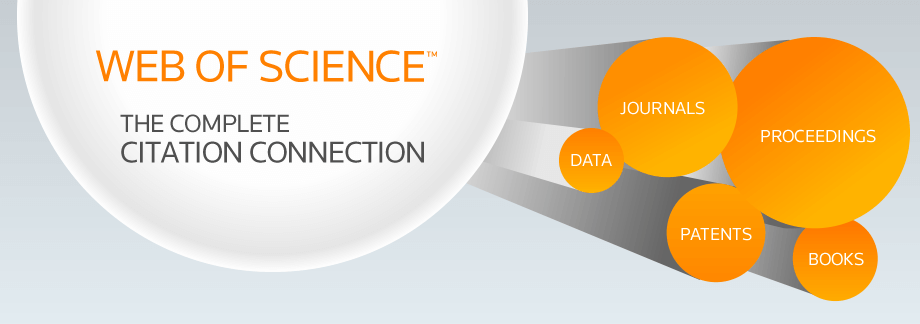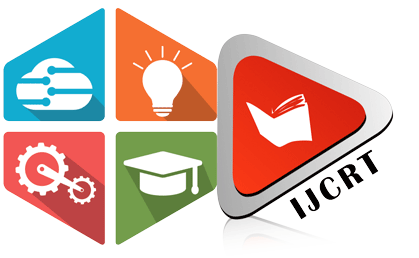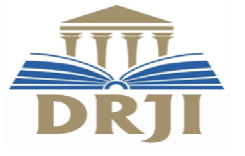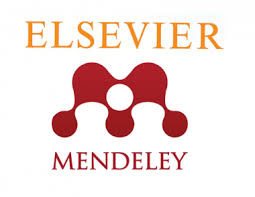INTERNATIONAL JOURNAL OF CREATIVE RESEARCH THOUGHTS - IJCRT (IJCRT.ORG)
International Peer Reviewed & Refereed Journals, Open Access Journal
IJCRT Peer-Reviewed (Refereed) Journal as Per New UGC Rules.
ISSN Approved Journal No: 2320-2882 | Impact factor: 7.97 | ESTD Year: 2013
Call For Paper - Volume 13 | Issue 11 | Month- November 2025
Scholarly open access journals, Peer-reviewed, and Refereed Journals, Impact factor 7.97 (Calculate by google scholar and Semantic Scholar | AI-Powered Research Tool) , Multidisciplinary, Monthly, Indexing in all major database & Metadata, Citation Generator, Digital Object Identifier(CrossRef DOI)
Contact Us Click Here
WhatsApp Contact Click Here
Volume 12 | Issue 5
| IJCRT Journal front page | IJCRT Journal Back Page |
Paper Title: Explainable Artificial Intelligence for Cyber Security
Publisher Journal Name: IJCRT
Your Paper Publication Details:
Published Paper ID: - IJCRT2405485
Register Paper ID - 260158
Title: EXPLAINABLE ARTIFICIAL INTELLIGENCE FOR CYBER SECURITY
Author Name(s): Savitha B
Publisher Journal name: IJCRT
Volume: 12
Issue: 5
Pages: e535-e540
Year: May 2024
Downloads: 140
Abstract
As a foundational technology in the security net environment, detection of network intrusions has a great deal of attention and use. Network Intrusion Detection (NID) still has difficulties when it comes to installing on devices with limited resources, despite the tremendous efforts of research & advanced technologies. We provide a lightweight detection of intrusions technique based on knowledge of extraction is called Lightweight Neural Network (LNet), which strikes the balance between efficiency and accuracy by concurrently lowering computing costs and model storage. To be more precise, we stack DeepMax blocks to create the LNet after carefully designing the DeepMax blocks to extract compressed representation effectively. Additionally, in order to compensate for the lightweight network's performance decrease, we apply batchwise knowledge of oneself distillation to regularise training consistency. Our suggested Lightweight Neural Network (LNN) and XGboost methodology is shown to be successful on Allflowmeter_Hikari datasets through experiments
Licence: creative commons attribution 4.0
License
Keywords
Explainable Artificial Intelligence for Cyber Security
License
Paper Title: Intelligent Carrier
Publisher Journal Name: IJCRT
Your Paper Publication Details:
Published Paper ID: - IJCRT2405484
Register Paper ID - 259820
Title: INTELLIGENT CARRIER
Author Name(s): Boaz K Michael, Harsh T Krishna, Amaldev P M, Joyal Santhosh, Manjusha P
Publisher Journal name: IJCRT
Volume: 12
Issue: 5
Pages: e532-e534
Year: May 2024
Downloads: 120
Abstract
Logistics especially cargo handling and import exports highly depend on internal and external transportation chains which are usually handled by human drivers and overseers or in recent developments by partially automated vehicles which has disadvantage of free thinking. Our project "intelligent carrier" is primarily aimed to automate cargo and luggage handling in airports at an affordable price such that it can also be implemented by storage handlers etc. This carrier follows prefixed and subsidiary paths for intelligent path selection and added ability to avoid obstacles. This robot is completely developed to be controlled by an external processing centre which is able to control multiple robot units. Its complete function is to position an airplane on its arrival and allot a robot carrier which travels along the mapped path with intelligent obstacle avoidance to reach predestined position based on closeness to the anchor location.
Licence: creative commons attribution 4.0
License
Keywords
carrier, anchor, processing center
License
Paper Title: PREPARATION AND EVALUATION OF POVIDONE IODINE CONTAINING FILM FORMING GEL
Publisher Journal Name: IJCRT
Your Paper Publication Details:
Published Paper ID: - IJCRT2405483
Register Paper ID - 260143
Title: PREPARATION AND EVALUATION OF POVIDONE IODINE CONTAINING FILM FORMING GEL
Author Name(s): Lala Moinuddin, Dr. Vishnu Patel, Dr. Maulik Mehta
Publisher Journal name: IJCRT
Volume: 12
Issue: 5
Pages: e508-e531
Year: May 2024
Downloads: 180
Abstract
The Film-forming gels containing povidone iodine can create a protective barrier over the wound, promoting a moist environment conducive to healing while preventing infection. The experimental work done to carry out organoleptic properties, UV spectroscopy, FTIR study and melting point determination for drug determination and then trial batches were prepared for determining the concentration and selection various polymers. Based on that factorial batches were prepared and evaluation is performed. The povidone iodine gel was prepared using different ratios of PVA and PVP K-30, PEG 400 used as a plasticizer. Formulations (F1-F9) were prepared and evaluated for their physicochemical properties. Based on that 32 full factorial designs were applied to optimize the final formulation and check the impact of independent variables. The optimized (F6) Formulation (Ratio of PVA: PVP K-30 and PEG 400) exhibited % drug release 93.59% in 360 minutes. F6 formulation found stable for 1 month during stability study.
Licence: creative commons attribution 4.0
License
Keywords
Film forming gel, povidone iodine, antiseptic, wound healing.
License
Paper Title: VITAMIN DEFICIENCY DETECTION USING IMAGE PROCESSING AND NEURAL NETWORK
Publisher Journal Name: IJCRT
Your Paper Publication Details:
Published Paper ID: - IJCRT2405482
Register Paper ID - 260102
Title: VITAMIN DEFICIENCY DETECTION USING IMAGE PROCESSING AND NEURAL NETWORK
Author Name(s): Sapna B Kulkarni, G. Nirmitha, K. Anupriya, K. Poojitha, Gouthami.R
Publisher Journal name: IJCRT
Volume: 12
Issue: 5
Pages: e498-e507
Year: May 2024
Downloads: 185
Abstract
A wide spectrum of vitamin deficiencies can show one or more visually distinguishable symptoms and indications that appear in multiple locations in the human body. The application provides individuals with the capability to diagnose their possible vitamin deficiencies without the need to provide blood samples through the analysis of photos taken of their eyes, lips, tongue, and nails. This process is implemented using the deep learning based CNN algorithm. Here we have considered the dataset of eyes, lips, tongue and lips. Once after the consideration of dataset, the pre-processing is performed and then CNN algorithm is used to train the data. Once after the training, model is saved and the testing is performed using the dataset.
Licence: creative commons attribution 4.0
License
Keywords
-Vitamin deficiency, deep learning, CNN, dataset
License
Paper Title: Predictive Modeling of Health Insurance Premiums for Cardiac Patients Using Fuzzy Inference Techniques
Publisher Journal Name: IJCRT
Your Paper Publication Details:
Published Paper ID: - IJCRT2405481
Register Paper ID - 260214
Title: PREDICTIVE MODELING OF HEALTH INSURANCE PREMIUMS FOR CARDIAC PATIENTS USING FUZZY INFERENCE TECHNIQUES
Author Name(s): Kushal Pal Singh, Bhopal Singh Sharma
Publisher Journal name: IJCRT
Volume: 12
Issue: 5
Pages: e484-e497
Year: May 2024
Downloads: 146
Abstract
In the contemporary landscape, both insurance companies and customers (insurers) are increasingly motivated to secure the most advantageous deals, particularly in the realm of health insurance where the need for coverage is of paramount concern. Customers, in particular, exhibit a heightened sense of caution when evaluating health insurance options. Fuzzy logic is a computational approach that deals with uncertainty and imprecision, has emerged as a versatile solution across various real-world domains such as electronics, computer science, finance and medical science. This study offers a comprehensive exploration of the application of fuzzy sets methodologies within the field of actuarial science, focusing on health insurance risk assessment. It delves into the foundational mathematics underpinning fuzzy sets, providing a quick overview of their development and utilization. Moreover, the study demonstrates how fuzzy logic models can be effectively constructed and refined to adapt to changing rules and incorporate supplementary data, thus enhancing their predictive accuracy and practical utility. Here a model is presented, which is based on fuzzy expert system that will help the insurance companies to find out predictive modeling of health insurance premiums for cardiac patients using Fuzzy Inference Techniques. Through the application of fuzzy logic techniques, the study aims to derive actionable insights that can inform more informed decision-making processes in the realm of health insurance.
Licence: creative commons attribution 4.0
License
Keywords
Health insurance, Decision-making, Risk assessment, Predictive modeling, Policy evaluation.
License
Paper Title: Intelligent traffic management system using yolo machine learning
Publisher Journal Name: IJCRT
Your Paper Publication Details:
Published Paper ID: - IJCRT2405480
Register Paper ID - 260136
Title: INTELLIGENT TRAFFIC MANAGEMENT SYSTEM USING YOLO MACHINE LEARNING
Author Name(s): D.V.RAJ KUMAR, C.SETHUPATHI, D.SAMIDURAI, A.PradeepKumar
Publisher Journal name: IJCRT
Volume: 12
Issue: 5
Pages: e469-e483
Year: May 2024
Downloads: 160
Abstract
People in today's era usually have the tendency of using their own private vehicles for commutation rather than using public transit and this result in large number of private vehicles on road. It leads to traffic congestion at every roads. In such scenario one cannot restrict individual to limit the usage of their private vehicles but we can able to manage traffic flow in a way that it doesn't alleviate congestion issues. The traditional traffic management approach works efficiently only if the traffic is less, but if the density of vehicles on a particular side of road increases on one side than other side, this approach fails. Hence, we aim to redesign the traffic signal system from static switching to dynamic signal switching, which can perform instant-time signal monitoring and handling. There are many projects emerging in order to convert the current transport system of cities to 'Smart system', by introducing Intelligent Transport System. Many initiatives are taken to design a system that can perform instant monitoring of traffic signals i.e., the traffic signal switching time will depend on the count of vehicles on each side of the road instead of predefined switching time. The switching time of signal will be decided based on vehicle detection in day-to-day traffic scenarios with good accuracy. This practice can prove its effectiveness in releasing the congested traffic at an efficient and faster rate
Licence: creative commons attribution 4.0
License
Keywords
Intelligent traffic management system
License
Paper Title: Formulation and Evaluation of polyherbal anti diabetic drug.:A Review
Publisher Journal Name: IJCRT
Your Paper Publication Details:
Published Paper ID: - IJCRT2405479
Register Paper ID - 260152
Title: FORMULATION AND EVALUATION OF POLYHERBAL ANTI DIABETIC DRUG.:A REVIEW
Author Name(s): Rinki Sherpa, Shivani Sharma
Publisher Journal name: IJCRT
Volume: 12
Issue: 5
Pages: e458-e468
Year: May 2024
Downloads: 142
Abstract
Diabetes mellitus is defined as the metabolic disorder of multiple etiology characterized by chronic hyperglycaemia with the alterations in carbohydrates, protein and fat metabolism resulting from defects in insulin secretion, action or both. Type 1 diabetes mellitus develops when the insulin secreting pancreatic beta cells of islets of Langerhans are destroyed. This is an auto immune type of system. The type II diabetes is due to insulin resistance, i.e a disorder in which the cells within the liver, muscles and fat tissues do not use insulin properly. WHO projects that from the total diabetes patients in the world, more than half will live in Asia by 2030 and type II diabetes alone particularly increases up to 55 % by 2035. The people in developing countries still depend on the traditional practitioners and herbal medicine for their primary care. The interest for the medicinal plants with anti-diabetic properties has been increased worldwide for the treatment of diabetes mellitus than the conventional anti-diabetic drugs such as biguanides, sulfonylurea and thiazolidine dione, which are presently available. The main aim of the work is to formulate and evaluate poly herbal anti diabetic tablets for medicinal purpose by using Gurmar and Neem leaf were collected from the local area, dried, powdered and extracted with ethanol separately and stored for further use.
Licence: creative commons attribution 4.0
License
Keywords
Diabetes mellitus, herbal plant, Gurmar, Neem.
License
Paper Title: Disability Assessment In Karate Practitioners Having Low Back Pain Using Oswestry Low Back Pain Disability Questionnaire.
Publisher Journal Name: IJCRT
Your Paper Publication Details:
Published Paper ID: - IJCRT2405477
Register Paper ID - 258712
Title: DISABILITY ASSESSMENT IN KARATE PRACTITIONERS HAVING LOW BACK PAIN USING OSWESTRY LOW BACK PAIN DISABILITY QUESTIONNAIRE.
Author Name(s): Pearl Satra, Vaishali Ingole, Pranjal Grover
Publisher Journal name: IJCRT
Volume: 12
Issue: 5
Pages: e442-e448
Year: May 2024
Downloads: 163
Abstract
: Background and objective: Karate is one of the most participated sports in the world. It has rich history tracing back to China and India. Combat sports are characterized by high-intensity and long trainings, and require a high degree of mental concentration, which combined with the frequent shortening of the time needed for tissue regeneration, can place a significant overload on the lumbar spine. Low back pain is extremely common, not only among the general population but also among athletes. The most common causes of lumbar pain include inadequate biochemical patterns, muscle imbalance, improper warm ups, inadequate training leading to repeated micro injuries. Therefore, the objectives of this research were to assess the level of disability of low back pain in Karate practitioners using Oswestry Low Back Pain Disability Questionnaire. Materials and Methods: The study was conducted on a group of karate practitioners whose age ranged from 18 to 35 years with years of experience between 2 and more years. Oswestry low back pain disability questionnaire was used to assess level of disability for low back pain. Results: We had 46 males and 14 females out of 60 participants in our study. The study showed 10 participants had moderate disability and 50 participants had minimal disability. Conclusions: Low Back Pain commonly occurs in karate practitioners. Based on the study's results it can be concluded that low back pain has minimal disability in karate practitioners. Index Terms - Karate, Low back pain (LBP), Oswestry low back pain disability questionnaire.
Licence: creative commons attribution 4.0
License
Keywords
- Karate, Low back pain (LBP), Oswestry low back pain disability questionnaire.
License
Paper Title: Halegannada to Hosa kannada Translator
Publisher Journal Name: IJCRT
Your Paper Publication Details:
Published Paper ID: - IJCRT2405476
Register Paper ID - 259930
Title: HALEGANNADA TO HOSA KANNADA TRANSLATOR
Author Name(s): Vijay Kumar M S, Bhavana M, Neha L, Prerana B, Thanushree G P
Publisher Journal name: IJCRT
Volume: 12
Issue: 5
Pages: e436-e441
Year: May 2024
Downloads: 144
Abstract
Rooted in a rich historical tapestry, Kannada, a language that has evolved over time, presents shifts in pronunciation, sentence structure, words, and meanings. This project aimed at rendering old Kannada more accessible by offering written and spoken interpretations. The project introduces a "smart translator" converting old Kannada into the modern variant, facilitating comprehension through word and sentence mapping. Additionally, it employs Optical Character Recognition (OCR) to recognize handwritten characters within scanned images. The system also integrates Text-to-Speech (TTS) technology, enhancing accessibility for users. By digitizing handwritten text and accurately mapping translations, the project bridges the gap between old and modern Kannada. This comprehensive approach seeks to understand and preserve the linguistic and cultural heritage of old Kannada, ensuring its continued enrichment of modern Kannada and the broader cultural landscape. However, challenges remain in effectively translating and comprehending old Kannada text, hindering access to valuable historical and literary resources. Through ongoing development and refinement, the proposed system aims to overcome these obstacles and contribute to the preservation and accessibility of Kannada heritage.
Licence: creative commons attribution 4.0
License
Keywords
Analysis, investigation, research, Kannada, OCR, TTS.
License
Paper Title: A Study on Financial Statements and Analysis of ISKCON
Publisher Journal Name: IJCRT
Your Paper Publication Details:
Published Paper ID: - IJCRT2405475
Register Paper ID - 260087
Title: A STUDY ON FINANCIAL STATEMENTS AND ANALYSIS OF ISKCON
Author Name(s): Shyaam V, Swathi R
Publisher Journal name: IJCRT
Volume: 12
Issue: 5
Pages: e426-e435
Year: May 2024
Downloads: 297
Abstract
order to offer a thorough evaluation on the International Society for Krishna Consciousness's (ISKCON) financial performance and sustainability, this study examines the organization's financial statements. This study intends to assess ISKCON's financial health, effectiveness, as well as efficiency in resource allocation using financial statement analytic methodologies, among which are analysis of trends, along with comparative analysis. Through an analysis of critical financial metrics like liquidity, profitability, solvency, as well as efficiency, this study aims to shed light on ISKCON's financial management strategies, pinpoint its strong and weak points, and offer suggestions for improving sustainability and financial performance. The study's conclusions add to our knowledge regarding the financial dynamics that exist within religious institutions and provide insightful information to ISKCON's management, donors, and stakeholders.
Licence: creative commons attribution 4.0
License
Keywords
ISKCON, Financial performance, financial statements, comparative analysis, trend analysis
License
Paper Title: The Big Bang reviewed by quantum mechanics
Publisher Journal Name: IJCRT
Your Paper Publication Details:
Published Paper ID: - IJCRT2405474
Register Paper ID - 259959
Title: THE BIG BANG REVIEWED BY QUANTUM MECHANICS
Author Name(s): Pascal Wery
Publisher Journal name: IJCRT
Volume: 12
Issue: 5
Pages: e422-e425
Year: May 2024
Downloads: 175
Abstract
Thanks to Edwin Hubble's observations we know that universal expansion unfolds the cosmos. Going back in time, we think the universe was more concentrated. Here comes the amalgam between concentration and volume: because the universe was more concentrated, we think it was also smaller. But the size of the universe is a big unknown. Its limits could never be established. What is established are human errors: at first, it was thought that the universe was limited to Earth. Then it was the sun that became the center of the cosmos. Then we thought the universe was limited to our galaxy. Today, despite James Webb, the limits of the universe are still not found! In short, what makes us think that the universe has limits? Arbitrariness: the human has its limits. Territorial boundaries, among other things. Like its home, its garden or its country. So, when humans interpret their environment, they automatically look for limits. However, it is not the human who created space. He just interprets it... in his own way: with automatic limits! Limits that could never be established. What is established, on the contrary, is the immensity of space!
Licence: creative commons attribution 4.0
License
Keywords
Big Bang, inflation, gravitational singularity, quantum mechanics, exclusion of Pauli, EPR paradox
License
Paper Title: CONCEPTUAL REVIEW OF VANGA( TIN) WITH SPECIAL REFERENCE TO RASA TARANGINI
Publisher Journal Name: IJCRT
Your Paper Publication Details:
Published Paper ID: - IJCRT2405473
Register Paper ID - 260118
Title: CONCEPTUAL REVIEW OF VANGA( TIN) WITH SPECIAL REFERENCE TO RASA TARANGINI
Author Name(s): Dr. DASARI KARTHIK, Dr.Ch. Sridurga
Publisher Journal name: IJCRT
Volume: 12
Issue: 5
Pages: e416-e421
Year: May 2024
Downloads: 199
Abstract
Rasa Shastra - mainly deals with mercurial ,mineral and metal based medicines indicated in treatment of various diseases. Rasa Shastra , clearly explained about various standard operating procedures in preparation of Ayurvedic medicines. Vanga(Tin), is a Putiloha, which is used in form of Bhasma therapeutically in different type of diseases. There are many hidden properties of Vanga which have ability to the cure most of the diseases. This paper explains about the therapeutic uses of Vanga in detail.
Licence: creative commons attribution 4.0
License
Keywords
Rasa Shastra, Vanga , Putiloha , Vanga Bhasma therapeutic uses.
License
Paper Title: Classifying Fake News Articles Using Machine Learning
Publisher Journal Name: IJCRT
Your Paper Publication Details:
Published Paper ID: - IJCRT2405472
Register Paper ID - 260089
Title: CLASSIFYING FAKE NEWS ARTICLES USING MACHINE LEARNING
Author Name(s): Lalitha siripurapu, Ramarapu Bangari, Avinash Babu.D, Subhendu Kumar Mishra, Anna neha thomash
Publisher Journal name: IJCRT
Volume: 12
Issue: 5
Pages: e410-e415
Year: May 2024
Downloads: 137
Abstract
A number of linguistic traits are common to the fake news reports that are first spread over social media platforms, including an overuse of unfounded hyperbole and unattributed cited information. The performance of a fake news classifier is documented in a study on fake news identification, the results of which are provided in this publication. A innovative fake news detector that leverages quoted attribution in a Bayesian machine learning system as a major feature to evaluate the likelihood that a news story is fraudulent was developed using the Text blob, Natural Language, and SciPy Toolkits. The method precision as a result is 63.333% effective in determining the probability of forgery in an article containing quotes, Influence mining is the term for this procedure, which is described as a unique tool that can be used to detect propaganda and even fake news.
Licence: creative commons attribution 4.0
License
Keywords
? Natural Language,Fake News,Fake NewsStories,Machine Learning,Social Media,Classification Performance,Twitter,Social Media Platforms,Integration Problems,Radio News,Research Team,Training Set, News Quality
License
Paper Title: Digit Recognition from BGMI Result through Segmentation and OCR Using Yolov8
Publisher Journal Name: IJCRT
Your Paper Publication Details:
Published Paper ID: - IJCRT2405471
Register Paper ID - 259582
Title: DIGIT RECOGNITION FROM BGMI RESULT THROUGH SEGMENTATION AND OCR USING YOLOV8
Author Name(s): Badal Barahate, Mosin Ibrahim Hasan, Bhavesh Ashokbhai Tanawala
Publisher Journal name: IJCRT
Volume: 12
Issue: 5
Pages: e401-e409
Year: May 2024
Downloads: 129
Abstract
In recent years, numerous efforts have been made to shorten the time needed for doing manual work by automating with the help of machine learning and Artificial Intelligence, which are related to postcard, making tables and many other aspects. Esports is growing at a rocket speed and tournaments are organised for which result of matches needs to be made to evaluate points of individual players or teams. Our research focuses on automating table making through feature extraction for which the model extracts the score of players from the screenshot of current most popular game in India, BGMI. We prepared the dataset related to the games having 400 screenshots from the players results. We extracted ROI from the screen shot using Yolo. Once we separate the needed part out, we utilize the OCR that is also based with YOLO. Once we get the needed digits from the image, we will get it as a table having 20 team's score. The project hence would be able to generated a result in 98.3% times the manual labor.
Licence: creative commons attribution 4.0
License
Keywords
BGMI, OCR, Segmentation and Yolo
License
Paper Title: INTEGRATING IMAGE CAPTIONING AND FACE RECOGNITION
Publisher Journal Name: IJCRT
Your Paper Publication Details:
Published Paper ID: - IJCRT2405470
Register Paper ID - 260249
Title: INTEGRATING IMAGE CAPTIONING AND FACE RECOGNITION
Author Name(s): Rakshith M B, Israr Ahmed, Rishi Ragav, Mohammed Faizan Usman Sait
Publisher Journal name: IJCRT
Volume: 12
Issue: 5
Pages: e389-e400
Year: May 2024
Downloads: 209
Abstract
Abstract: This research paper explores the integration of image captioning and face recognition using generative AI techniques. Image captioning involves generating textual descriptions of images, while face recognition identifies and verifies individuals in images. Combining these tasks can enhance various applications, such as accessibility tools for the visually impaired, surveillance systems, and social media platforms. We propose a generative AI framework that leverages deep learning models to accomplish both tasks simultaneously. The framework extracts features from images, detects faces, recognizes individuals, and generates captions using a single model. Experimental results demonstrate the effectiveness of the proposed approach in generating accurate image descriptions and recognizing faces in various scenarios
Licence: creative commons attribution 4.0
License
Keywords
generative ai, image captioning, face recognition
License
Paper Title: Study of Zooplankton diversity in Ramoua Dam at Gwalior district of Madhya Pradesh
Publisher Journal Name: IJCRT
Your Paper Publication Details:
Published Paper ID: - IJCRT2405469
Register Paper ID - 258613
Title: STUDY OF ZOOPLANKTON DIVERSITY IN RAMOUA DAM AT GWALIOR DISTRICT OF MADHYA PRADESH
Author Name(s): Preeti Mourya, Ramkumar Lodhi
Publisher Journal name: IJCRT
Volume: 12
Issue: 5
Pages: e379-e388
Year: May 2024
Downloads: 163
Abstract
Licence: creative commons attribution 4.0
License
Keywords
Zooplankton, Diversity, Ramoua Dam, Gwalior, micro-organism
License
Paper Title: smart hand glove using flexing sensors
Publisher Journal Name: IJCRT
Your Paper Publication Details:
Published Paper ID: - IJCRT2405468
Register Paper ID - 259613
Title: SMART HAND GLOVE USING FLEXING SENSORS
Author Name(s): Dhanya Shetty, Pooja motirave, Sushma B Kamble
Publisher Journal name: IJCRT
Volume: 12
Issue: 5
Pages: e374-e378
Year: May 2024
Downloads: 235
Abstract
Smart hand gloves equipped with flex sensors offer a promising solution for monitoring and assisting patients with hand-related conditions or injuries. These gloves incorporate flexible sensors that detect the degree of finger bending and transmit this data to a monitoring system. The flex sensor technology enables real-time tracking of hand movements and gestures, allowing healthcare professionals to assess the range of motion, dexterity, and muscle strength in patients. Additionally, these gloves can be integrated with smart devices or applications to provide personalized rehabilitation exercises, feedback, and reminders for patients to perform hand exercises regularly. By leveraging flex sensor technology, smart hand gloves have the potential to improve the rehabilitation process, enhance patient engagement, and facilitate remote monitoring of hand related conditions, ultimately contributing to better patient outcomes and quality of life.
Licence: creative commons attribution 4.0
License
Keywords
raspberry pi, flex sensors, bending, accelerometer
License
Paper Title: Real - Time emotion detection
Publisher Journal Name: IJCRT
Your Paper Publication Details:
Published Paper ID: - IJCRT2405467
Register Paper ID - 259115
Title: REAL - TIME EMOTION DETECTION
Author Name(s): Dr. U. V. Anbazhagu, Tushar Srivastava, Aryan Tanay
Publisher Journal name: IJCRT
Volume: 12
Issue: 5
Pages: e367-e373
Year: May 2024
Downloads: 146
Abstract
Face recognition is about finding and localizing human faces in digital images, which has numerous applications in various fields of science and technology. It is a difficult problem due to the diversity and complexity of facial features and expressions, as well as the presence of artificial faces that can deceive human observers. To recognize faces, computer programs must analyze and interpret visual data, which is a difficult and time-consuming process for humans. Therefore, there is a need for automated systems that can efficiently and accurately recognize faces in different scenarios. This article provides an overview of the different methods and techniques used for face recognition and discusses the challenges and practical aspects in this area. It also gives an overview of the types of features used for face recognition and provides some guidelines for developing a robust face recognition system. In addition, some possible directions for future research in this area are outlined.
Licence: creative commons attribution 4.0
License
Keywords
Haar cascade & convolution neural network(CNN), Local binary pattern histogram (LPBH), facenet
License
Paper Title: Coupled Thermal and Structural Analysis of Gas Turbine Blade
Publisher Journal Name: IJCRT
Your Paper Publication Details:
Published Paper ID: - IJCRT2405466
Register Paper ID - 259558
Title: COUPLED THERMAL AND STRUCTURAL ANALYSIS OF GAS TURBINE BLADE
Author Name(s): Sanika Benke, Ganesh Korwar, Charvi Potdar, Shreya Channawar
Publisher Journal name: IJCRT
Volume: 12
Issue: 5
Pages: e359-e366
Year: May 2024
Downloads: 172
Abstract
This study presents a comprehensive thermal and structural analysis of a gas turbine rotor blade utilizing ANSYS software. Gas turbine rotor blades are critical components in gas turbine engines, subjected to extreme thermal and mechanical loads during operation. Understanding their thermal behavior and structural integrity is crucial for optimizing performance and ensuring safe operation. The study employs both thermal and structural analyses, with results including temperature distribution and total heat flux obtained from the thermal analysis, and total deformation and equivalent stress from the structural analysis. The model is constructed using SolidWorks and then imported into Ansys for analysis.
Licence: creative commons attribution 4.0
License
Keywords
Gas Turbine Blade, Modelling, Thermal Analysis, Ansys
License
Paper Title: Role of Artifcial Intelligence in the Internet of Things (IoT) cybersecurity
Publisher Journal Name: IJCRT
Your Paper Publication Details:
Published Paper ID: - IJCRT2405465
Register Paper ID - 260026
Title: ROLE OF ARTIFCIAL INTELLIGENCE IN THE INTERNET OF THINGS (IOT) CYBERSECURITY
Author Name(s): Mrs Seema Bhushan Dhalpe
Publisher Journal name: IJCRT
Volume: 12
Issue: 5
Pages: e352-e358
Year: May 2024
Downloads: 145
Abstract
In recent years, the use of the Internet of Things (IoT) has increased exponentially, and cybersecurity concerns have Increased along with it. On the cutting edge of cybersecurity is Artifcial Intelligence (AI), which is used for the development of complex algorithms to protect networks and systems, including IoT systems. However, cyber-attackers have fgured out how to exploit AI and have even begun to use adversarial AI in order to carry out cybersecurity attacks. This review paper compiles information from several other surveys and research papers regarding IoT, AI, and attacks with and against AI and explores the relationship between these three topics with the purpose of comprehensively presenting and summarizing relevant literature in these felds
Licence: creative commons attribution 4.0
License
Keywords
Artifcial Intelligence o Internet of Things (IoT) o Cybersecurity
License
About IJCRT
The International Journal of Creative Research Thoughts (IJCRT) aims to explore advances in research pertaining to applied, theoretical and experimental Technological studies. The goal is to promote scientific information interchange between researchers, developers, engineers, students, and practitioners working in and around the world.
Indexing In Google Scholar, ResearcherID Thomson Reuters, Mendeley : reference manager, Academia.edu, arXiv.org, Research Gate, CiteSeerX, DocStoc, ISSUU, Scribd, and many more International Journal of Creative Research Thoughts (IJCRT) ISSN: 2320-2882 | Impact Factor: 7.97 | 7.97 impact factor and ISSN Approved. Provide DOI and Hard copy of Certificate. Low Open Access Processing Charges. 1500 INR for Indian author & 55$ for foreign International author. Call For Paper (Volume 13 | Issue 11 | Month- November 2025)
November 2025
Volume 13 | Issue 11
Last Date :
30-Nov-2025
Submit Manuscript Online Impact Factor: 7.97 Review Results : Within 02-03 Days Paper Publication : Within 02-03 Days

ISSN: 2320-2882 Impact Factor: 7.97 and ISSN APPROVED Journal Starting Year (ESTD) : 2013

ISSN: 2320-2882 Impact Factor: 7.97 and ISSN APPROVED Journal Starting Year (ESTD) : 2013

CONFERENCE PROPOSAL CONFERENCE PROCEEDINGS







































































